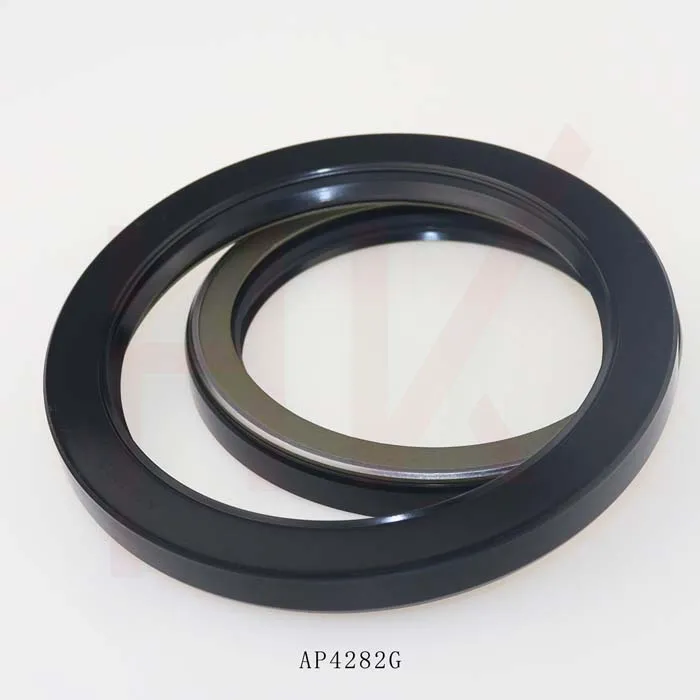डिस . 17, 2024 05:43 Back to list
hydraulic cylinder seal kit material
Hydraulic Cylinder Seal Kit Materials An Overview
Hydraulic cylinders are integral components in various industries, delivering power through pressurized fluid. They are widely used in construction machinery, automotive applications, manufacturing equipment, and more. One of the key factors that ensures the efficiency and durability of hydraulic cylinders is the quality of their seal kits. This article delves into the materials commonly used in hydraulic cylinder seal kits, their properties, and their significance in enhancing performance and longevity.
Understanding Hydraulic Cylinder Seal Kits
A hydraulic cylinder seal kit typically comprises various seals, including O-rings, rod seals, and piston seals, all designed to prevent leaks and maintain hydraulic pressure
. The choice of materials used in these seals is critical since they must withstand high pressure, temperature variations, and the aggressive nature of hydraulic fluids.Common Seal Kit Materials
1. Nitrile Rubber (NBR) Nitrile rubber, also known as Buna-N, is a popular choice for seal kits due to its excellent resistance to oils, fuels, and hydraulic fluids. It performs well in temperatures ranging from -40 to 100 degrees Celsius (-40 to 212 degrees Fahrenheit). The material's elasticity provides a reliable sealing solution, making it suitable for various hydraulic applications.
2. Hydrogenated Nitrile Rubber (HNBR) HNBR is an enhanced version of NBR, offering improved thermal stability and resistance to ozone and weathering. This material can withstand higher temperatures, typically up to 150 degrees Celsius (302 degrees Fahrenheit), making it ideal for high-performance hydraulic applications. HNBR seals are particularly advantageous in environments where exposure to aggressive chemicals is common.
3. Polyurethane Polyurethane seals are known for their excellent abrasion resistance and toughness. They can operate efficiently in a temperature range of -30 to 90 degrees Celsius (-22 to 194 degrees Fahrenheit). Polyurethane is highly resilient, which makes it a preferred material in applications where dynamic sealing is required, such as in hydraulic cylinders that experience continuous movement.
hydraulic cylinder seal kit material

4. Fluoroelastomer (FKM) Fluoroelastomers are high-performance sealing materials that offer exceptional resistance to high temperatures and harsh chemicals. Withstanding continuous service temperatures up to 200 degrees Celsius (392 degrees Fahrenheit), FKM seals are primarily used in specialized industrial applications where conventional materials may fail. Although more expensive, their durability justifies the cost in critical applications.
5. PTFE (Polytetrafluoroethylene) Known for its excellent chemical resistance and low friction properties, PTFE is often used in conjunction with other sealing materials to enhance their performance. PTFE seals are effective in high-temperature applications and can withstand a wide range of corrosive environments, making them ideal for hydraulic systems in the chemical and oil industries.
Importance of Seal Kit Material Selection
The selection of the right material for hydraulic cylinder seal kits is not merely a matter of preference; it directly affects the performance, safety, and longevity of hydraulic systems. The wrong material can lead to premature seal failure, which may result in costly downtime, system inefficiencies, and potential safety hazards.
When choosing seal kit materials, engineers must consider factors such as operating temperature, exposure to chemicals, mechanical wear, and the specific requirements of the hydraulic system. A thorough understanding of these parameters ensures that the appropriate seal material is selected to enhance reliability and performance.
Conclusion
In conclusion, the materials used in hydraulic cylinder seal kits play a crucial role in ensuring the functionality and lifespan of hydraulic systems. By carefully selecting materials such as NBR, HNBR, polyurethane, FKM, and PTFE based on the specific operating conditions, industries can achieve optimal performance and reduce maintenance costs. As technology advances, the development of new sealing materials continues to improve the efficiency of hydraulic systems, paving the way for greater innovation in hydraulic applications.
-
The Trans-formative Journey of Wheel Hub Oil Seals
NewsJun.06,2025
-
Graphene-Enhanced Oil Seals: Revolutionizing High-Pressure Oil Sealing
NewsJun.06,2025
-
Future of Hydraulic Sealing: Advanced Intelligent TCN Oil Seals
NewsJun.06,2025
-
Don’t Let a Broken TCV Oil Seal Ruin Your Day
NewsJun.06,2025
-
Bio-Inspired Dust Seals for Better Sealing Performance
NewsJun.06,2025
-
Biodegradable and Sustainable Hydraulic Seal Materials
NewsJun.06,2025
-
Top Oil Seal Solutions for Your Industrial Needs
NewsMay.22,2025
Products categories
















